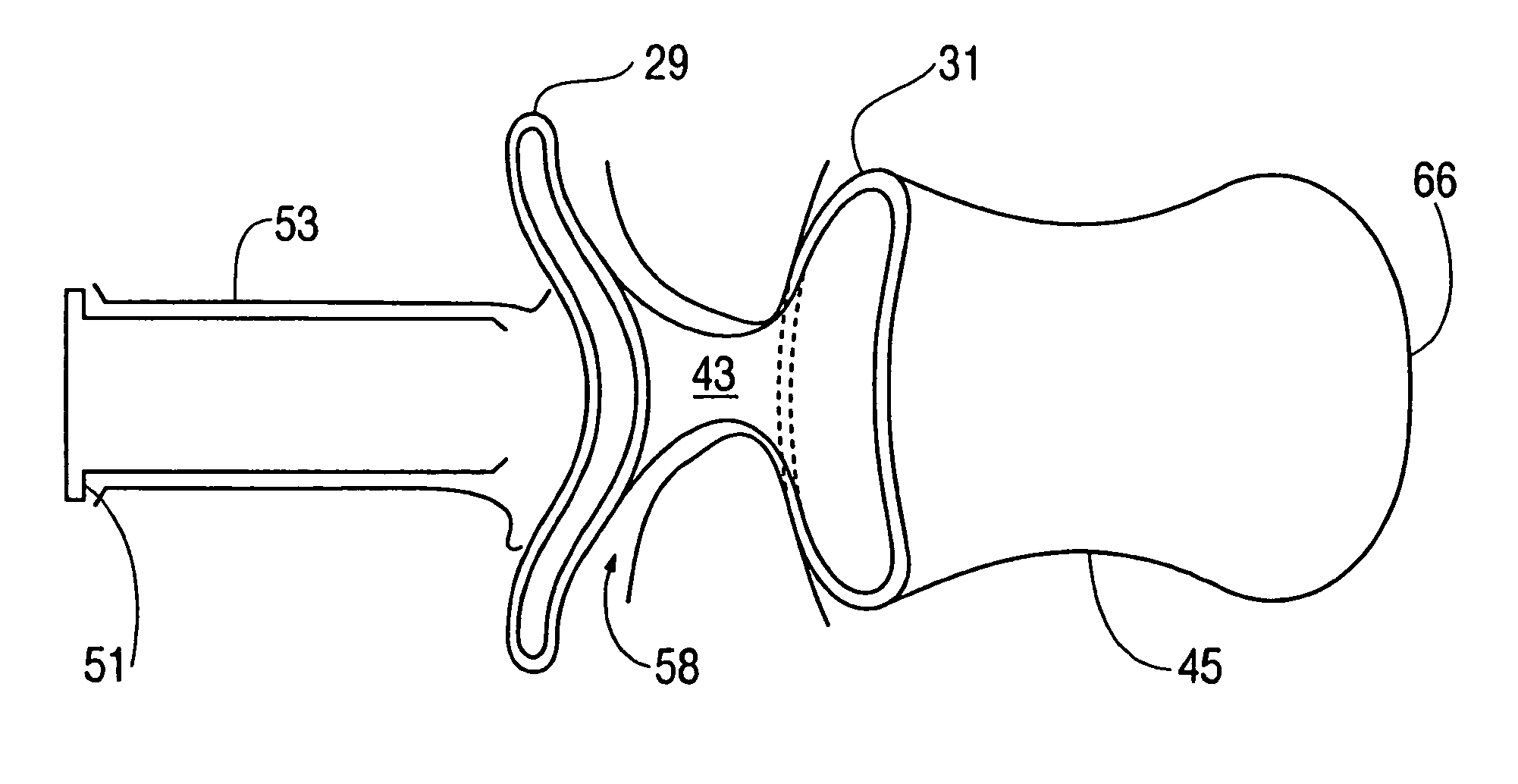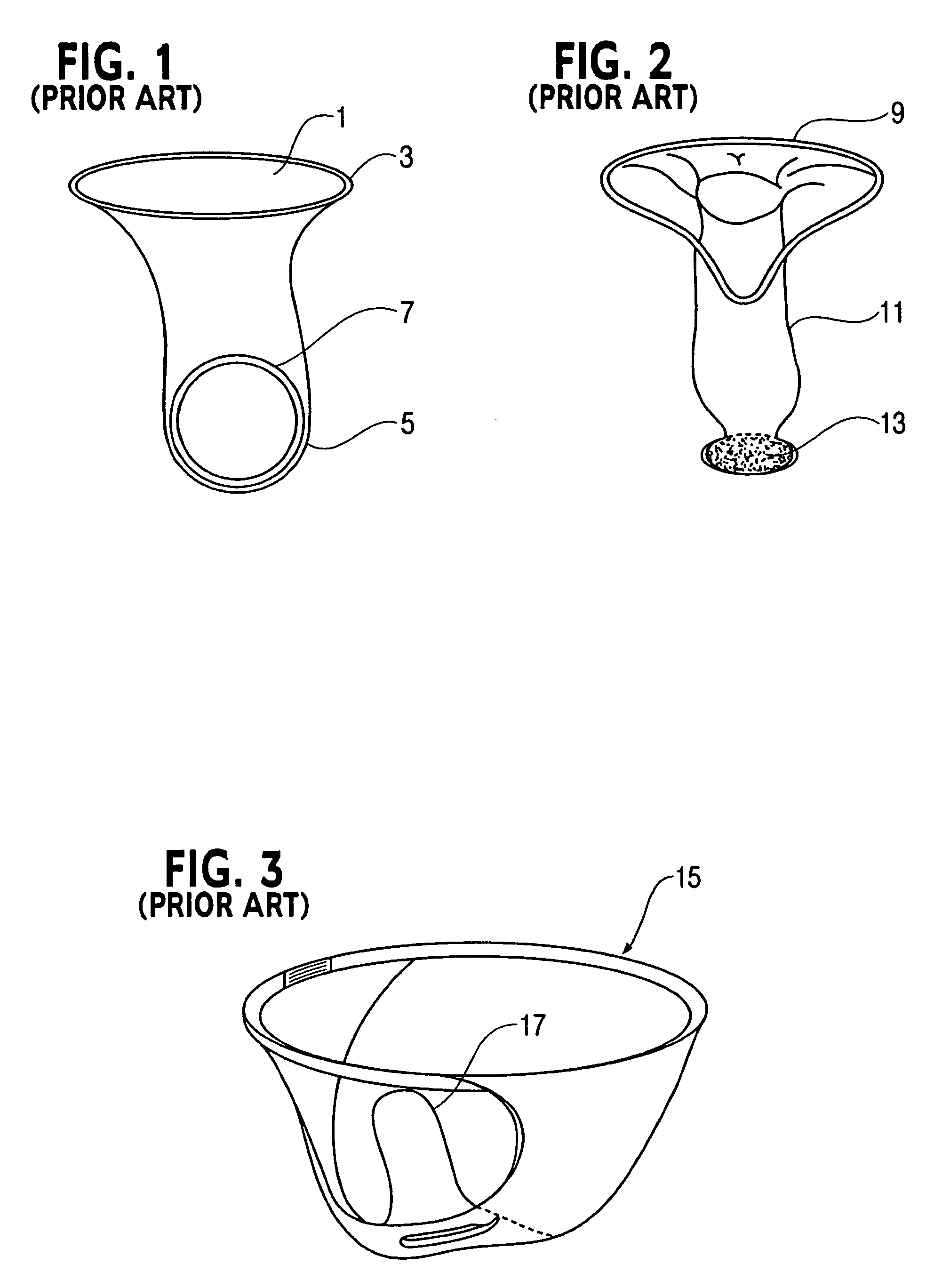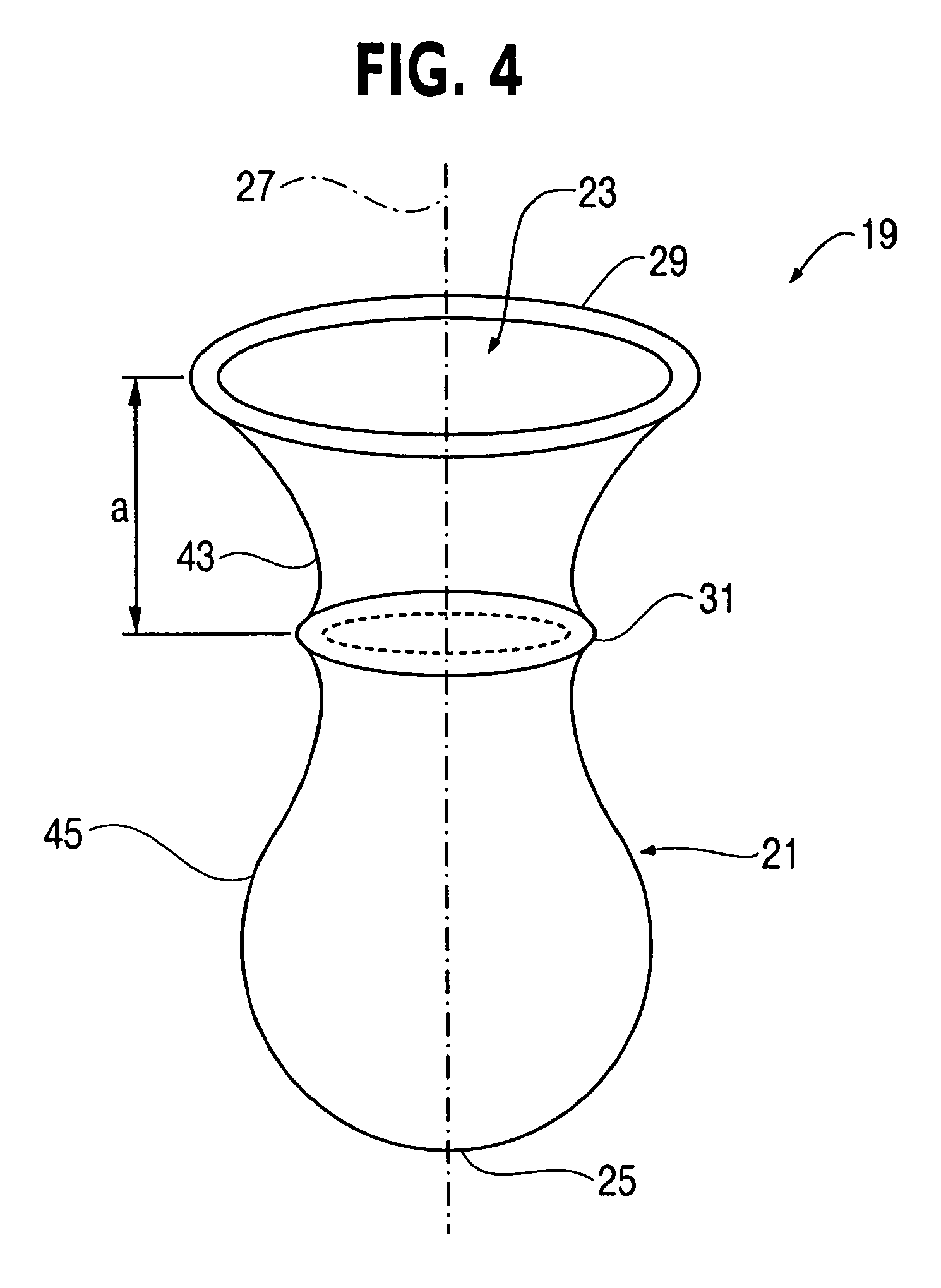Female condom employing tensegrity principle
a technology of tensegrity and female condoms, applied in the field of barrier protection devices for females, can solve the problems of awkward disruption of intimacy and foreplay, unsatisfactory solutions, serious health and social consequences for individuals and society at large, etc., and achieve the effects of minimal interference or diminishing the pleasure of sexual intercourse, improving external and internal stability, and increasing the effectiveness of female condoms as barrier protection devices
- Summary
- Abstract
- Description
- Claims
- Application Information
AI Technical Summary
Benefits of technology
Problems solved by technology
Method used
Image
Examples
Embodiment Construction
[0047]Female condoms in accordance with the present invention are placed in the vagina of a woman to provide a physical barrier to the transfer of fluids between partners during sexual intercourse, to thereby reduce the risks of disease transmission and unwanted pregnancy. The condoms operate uniquely by employing compression and tension forces to provide substantial stability of the female condom, both externally and internally of the vagina. The approach utilized generally joins tension and compression members in a structure that balances the involved forces. The approach utilized is a unique application of the “tensegrity” principle, a general geometric approach developed for buildings and tension framed structures in the 1940's by R. Buckminster Fuller.
[0048]Referring first to FIG. 4, a female condom 19 in accordance with the present invention comprises an elongated tubular pouch 21 of thin membranous material. Pouch 21 has an open end 23, a closed end 25, and a central longitud...
PUM
 Login to View More
Login to View More Abstract
Description
Claims
Application Information
 Login to View More
Login to View More - R&D
- Intellectual Property
- Life Sciences
- Materials
- Tech Scout
- Unparalleled Data Quality
- Higher Quality Content
- 60% Fewer Hallucinations
Browse by: Latest US Patents, China's latest patents, Technical Efficacy Thesaurus, Application Domain, Technology Topic, Popular Technical Reports.
© 2025 PatSnap. All rights reserved.Legal|Privacy policy|Modern Slavery Act Transparency Statement|Sitemap|About US| Contact US: help@patsnap.com



